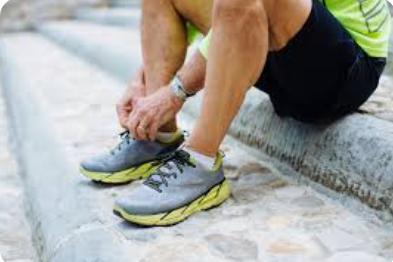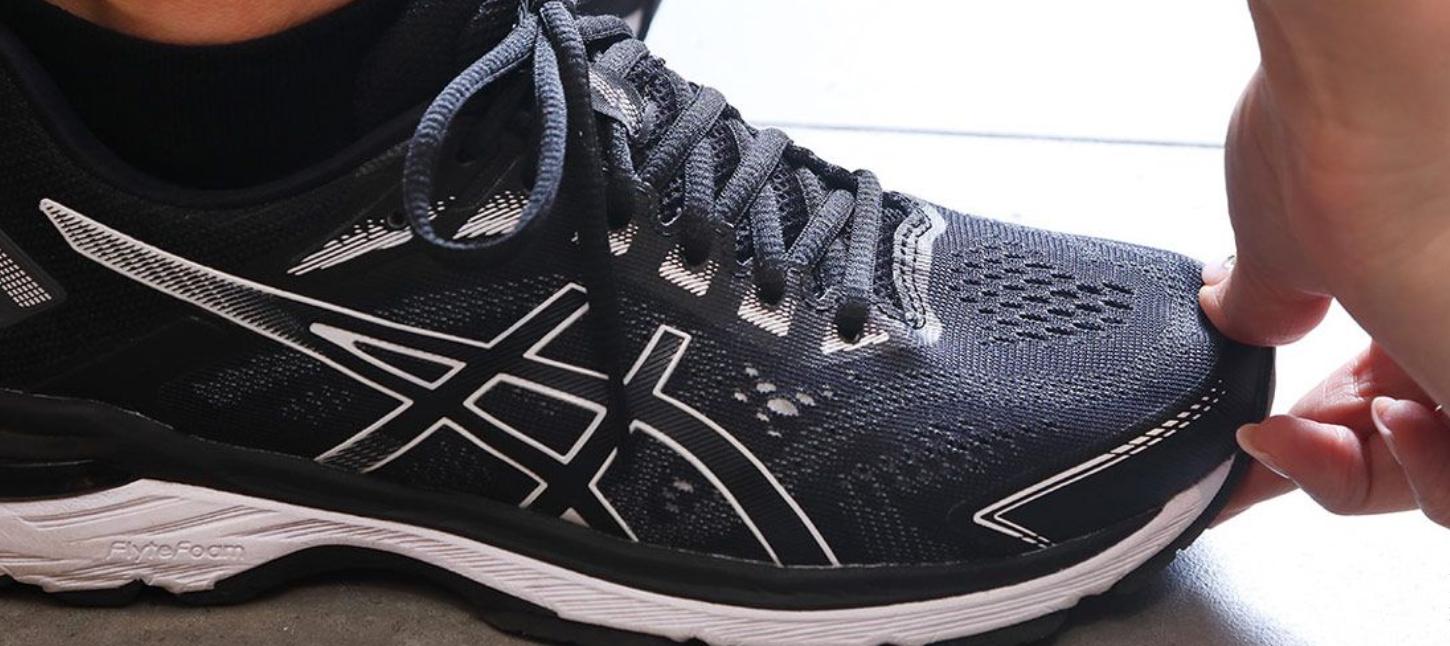Fitting running shoes correctly is crucial for any runner, whether you’re just starting out or have been running for years. A proper fit ensures comfort, reduces the risk of injury, and enhances performance. Wearing ill-fitting shoes can lead to blisters, foot pain, and even long-term injuries. This guide will walk you through the essential steps on how to fit running shoes perfectly, ensuring that your feet are supported and comfortable throughout your runs. By following these steps, you’ll be able to choose the right size, avoid common fitting mistakes, and find a pair of running shoes that truly suits your needs. Let’s dive into the process so you can get back to what you love—running, with shoes that fit just right.

Why Is Proper Fit Important for Running Shoes?
Preventing Injuries
When running, your feet endure repeated impact, making proper shoe fit essential to prevent injuries. Poorly fitted shoes can cause issues like blisters, calluses, and even more severe conditions such as plantar fasciitis. These problems arise when shoes are either too tight, too loose, or not supportive enough for your foot type. By ensuring that your running shoes fit correctly, you significantly reduce the risk of these injuries. The right fit means your shoes will move with your feet, providing the necessary support and cushioning in the areas that need it most.
Enhancing Performance
The fit of your running shoes directly affects your performance. Shoes that fit well allow your feet to move naturally, providing the flexibility and stability needed to maintain proper running form. When your shoes fit correctly, you can focus on your pace and stride rather than being distracted by discomfort. Additionally, well-fitted shoes help distribute your weight evenly, reducing the energy expenditure of your muscles and improving your overall efficiency. This means you can run longer and faster, with less effort.
Comfort and Longevity
Comfort is key when it comes to running. Shoes that fit well provide the necessary support and cushioning, reducing the likelihood of discomfort during and after runs. This comfort extends the lifespan of your shoes as well. When your shoes fit correctly, the wear and tear are evenly distributed, preventing premature breakdown in specific areas. By taking the time to find the right fit, you not only enhance your running experience but also save money by extending the life of your running shoes.
How to Measure Your Feet Correctly
What Tools Do You Need?
To accurately measure your feet, you’ll need a few basic tools. Start with a ruler or measuring tape, a piece of paper large enough to fit your foot, and a pen or pencil. You may also want a friend to assist, as this can make the process easier. First, place the paper on a flat surface and stand on it with your full weight. Trace around your foot, holding the pen vertically to get the most accurate outline. Once you’ve completed the outline, use the ruler or measuring tape to measure the length from the heel to the longest toe and the width at the widest part of your foot. These measurements will help you determine your shoe size and ensure a proper fit.
Step-by-Step Foot Measurement
Begin by measuring your feet at the end of the day, when they are at their largest. Stand on a piece of paper and trace the outline of each foot. Use a ruler to measure the distance from the heel to the tip of the longest toe; this is your foot length. Next, measure the width across the widest part of your foot. Repeat this process for both feet, as one foot is often slightly larger than the other. Always choose the shoe size that fits the larger foot. It’s also important to measure both feet while wearing the type of socks you plan to run in, as this can affect the fit.
Common Measurement Mistakes to Avoid
Several common mistakes can lead to inaccurate foot measurements. First, avoid measuring your feet in the morning, as they tend to swell throughout the day. Second, ensure you are standing while measuring, as this reflects the actual size of your feet under the weight of your body. Additionally, don’t forget to measure both feet; many people have one foot that is slightly larger. Another mistake is not wearing the socks you typically run in, which can affect the fit. Finally, make sure you hold the pen or pencil vertically when tracing your foot to get the most accurate outline.

How to Choose the Right Running Shoe Size?
Understanding Shoe Size Charts
Shoe size charts can be confusing, especially when dealing with different brands or regions. Most charts include measurements in inches or centimeters and provide corresponding shoe sizes for different countries. It’s important to remember that not all brands have the same sizing, so always refer to the specific brand’s size chart when purchasing running shoes. When using a size chart, locate your foot measurements on the chart to find the corresponding shoe size. If your measurement falls between sizes, it’s usually better to size up slightly to ensure a comfortable fit, especially for running shoes.
The Impact of Sock Thickness
The thickness of your running socks plays a significant role in determining your shoe size. Thicker socks can add up to a half-size to your foot measurement, making your shoes feel tighter. When trying on running shoes, wear the socks you plan to use during your runs to get an accurate fit. If you alternate between thick and thin socks depending on the weather or running conditions, consider how each affects the fit of your shoes. You may need to adjust your shoe size slightly to accommodate different sock thicknesses or even invest in multiple pairs of shoes for different conditions.
Trying on Shoes: What to Look For
When trying on running shoes, there are several key factors to consider. First, ensure there’s enough space between your longest toe and the end of the shoe—about a thumb’s width is ideal. Next, check the fit around your heel; it should be snug but not too tight to avoid slipping. The midfoot should feel secure, with no excessive pressure points. Walk or jog around the store to see how the shoes feel in motion. Pay attention to any areas of discomfort, as these will likely worsen during a run. If the shoes feel right during these tests, they’re likely a good fit.
How to Test the Fit of Running Shoes
The Thumb Test: Checking Toe Space
The thumb test is a simple yet effective way to check if your running shoes have enough space for your toes. To perform the thumb test, put on your running shoes and stand up. Press down with your thumb on the area of the shoe just in front of your longest toe. You should be able to fit your thumb between the tip of your toe and the front of the shoe. This space allows your toes to move freely and prevents them from hitting the front of the shoe during runs, which can lead to bruised toenails and discomfort.
Heel Fit: Avoiding Slippage
A proper heel fit is crucial to avoid slippage while running. When trying on running shoes, ensure that your heel is snugly positioned in the back of the shoe without any significant movement. To test this, walk or jog around and pay attention to how your heel feels. If it slips out or moves excessively, the shoe may be too large or not properly adjusted. Tightening the laces or trying a different lacing technique can sometimes improve the fit. A secure heel fit ensures that your foot remains stable during runs, reducing the risk of blisters and enhancing overall comfort.
Midfoot and Arch Support: Key Considerations
Midfoot and arch support are vital for maintaining comfort and preventing injury during runs. When testing running shoes, focus on how the midfoot and arch area feel. The shoe should provide adequate support without causing pressure or discomfort. To assess this, pay attention to any sensations of strain or lack of support in the arch area as you move. Shoes with the right arch support will help distribute your weight evenly across your foot, reducing the likelihood of overuse injuries like plantar fasciitis. If you have specific arch needs, such as flat feet or high arches, consider shoes designed to accommodate those conditions.
Conclusion
Finding the right fit for your running shoes is essential for comfort, performance, and injury prevention. By following this step-by-step guide on how to fit running shoes, you can ensure that your feet are well-supported and comfortable during every run. From measuring your feet accurately to understanding shoe size charts and testing the fit, each step plays a crucial role in finding the perfect pair. Invest the time in getting the right fit, and your feet will thank you with every mile you run.
FAQ
1. How often should I measure my feet for running shoes?
It’s recommended to measure your feet every time you purchase a new pair of running shoes, as foot size and shape can change over time.
2. What time of day is best for fitting running shoes?
The best time to measure your feet and try on running shoes is in the late afternoon or evening, as your feet tend to swell throughout the day.
3. Can I use the same size for different brands of running shoes?
Shoe sizes can vary between brands, so it’s important to check the specific size chart for each brand and try on the shoes to ensure a proper fit.

0 Comments